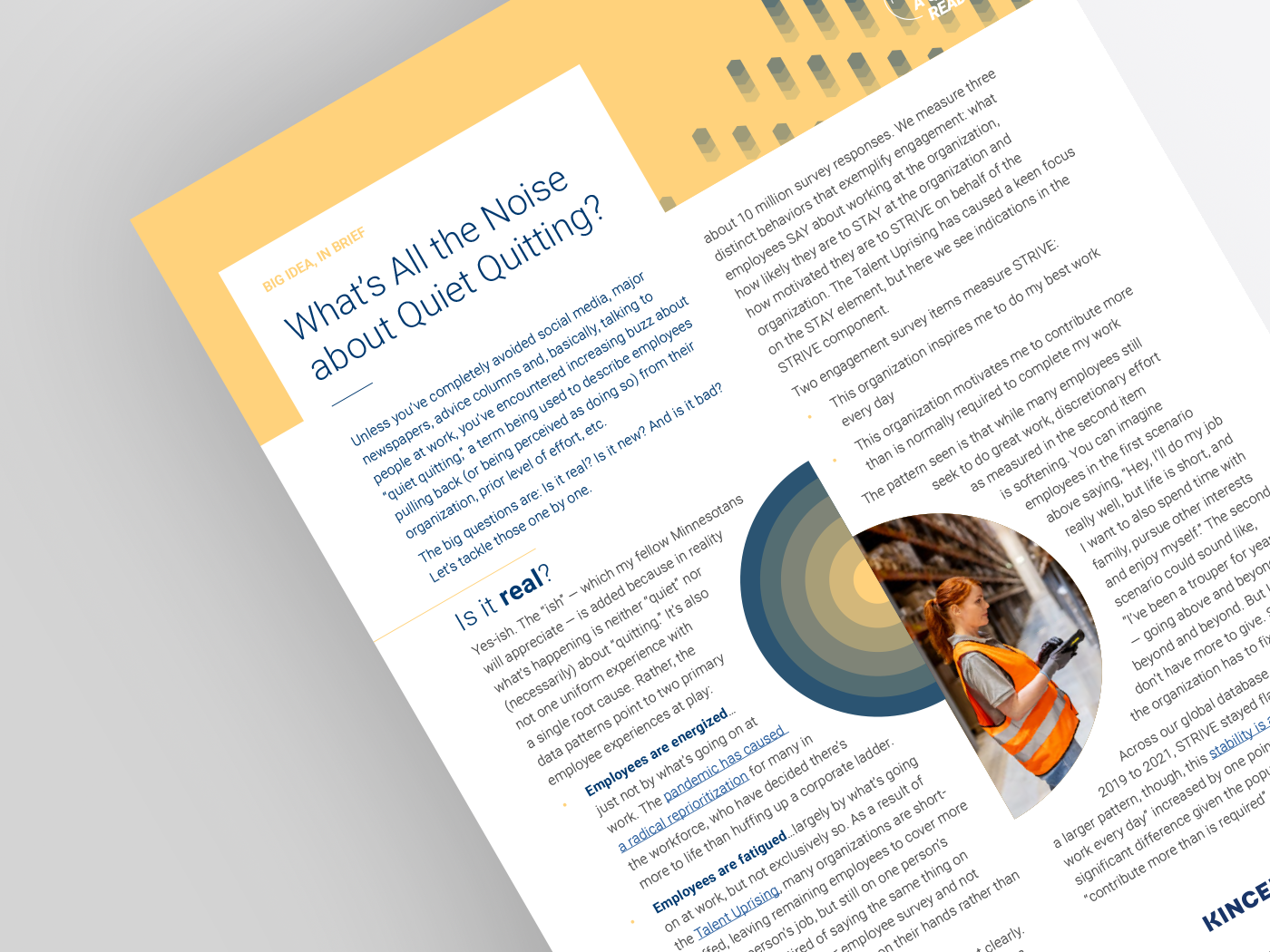
Unless you’ve completely avoided social media, major newspapers, advice columns and, basically, talking to people at work, you’ve encountered increasing buzz about “quiet quitting,” a term being used to describe employees pulling back (or being perceived as doing so) from their organization, prior level of effort, etc.
The big questions are: Is it real? Is it new? And is it bad? Let’s tackle those one by one.
Yes-ish. The “ish” — which my fellow Minnesotans will appreciate — is added because in reality what’s happening is neither “quiet” nor (necessarily) about “quitting.” It’s also not one uniform experience with a single root cause. Rather, the data patterns point to two primary employee experiences at play:
From a data standpoint, it shows up subtly but clearly. Kincentric’s global engagement database comprises about 10 million survey responses. We measure three distinct behaviors that exemplify engagement: what employees SAY about working at the organization, how likely they are to STAY at the organization and how motivated they are to STRIVE on behalf of the organization. The Talent Uprising has caused a keen focus on the STAY element, but here we see indications in the STRIVE component.
Two engagement survey items measure STRIVE:
The pattern seen is that while many employees still seek to do great work, discretionary effort as measured in the second item is softening. You can imagine employees in the first scenario above saying, “Hey, I’ll do my job really well, but life is short, and I want to also spend time with family, pursue other interests and enjoy myself.” The second scenario could sound like, “I’ve been a trouper for years — going above and beyond and beyond and beyond. But I just don’t have more to give. Seriously, the organization has to fix this.”
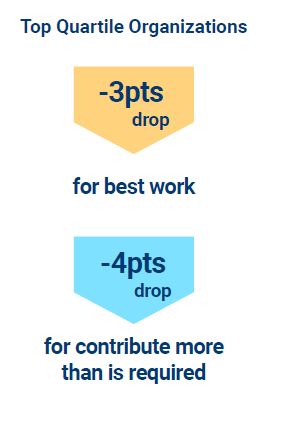 Across our global database, in comparing 2019 to 2021, STRIVE stayed flat. As is part of a larger pattern, though, this stability is an illusion. “Best work every day” increased by one point (a statistically significant difference given the population size), and “contribute more than is required” declined by one point.
Across our global database, in comparing 2019 to 2021, STRIVE stayed flat. As is part of a larger pattern, though, this stability is an illusion. “Best work every day” increased by one point (a statistically significant difference given the population size), and “contribute more than is required” declined by one point.
The delta is more noteworthy for organizations in the top quartile of our database, for whom “best work” declined by three points and “contribute more than is required” declined by four. The net impact is that within top quartile organizations, employees express a three-point-greater likelihood of doing their best work compared with going above and beyond. And for average organizations, the gap increases to four points.
No. The term is trendy and cute, but this is — at its core — employee engagement. For over 30 years we have seen employees who have pulled back on their engagement and, in turn, their performance, without necessarily exiting the organization. In some cases, they are in a “waiting to see what happens next” mode (e.g., “I’ll re-engage when I get promoted”); and in others it is just a decision to not fully lean in to work (for any number of reasons — but often because the experience isn’t rewarding them to do so).
Not necessarily. Having healthy boundaries is good. Prioritizing wellbeing is good. Realizing there’s more to life than work is good. But arriving at this point as a result of feeling burned out, taken advantage of or unheard is not.
Either way, here are some things organizations can do about it:
Employees aren’t being quiet, despite the trendy term. Unlocking the power of people and teams is possible when organizations know where and how to lean in and listen, and consistently follow through.
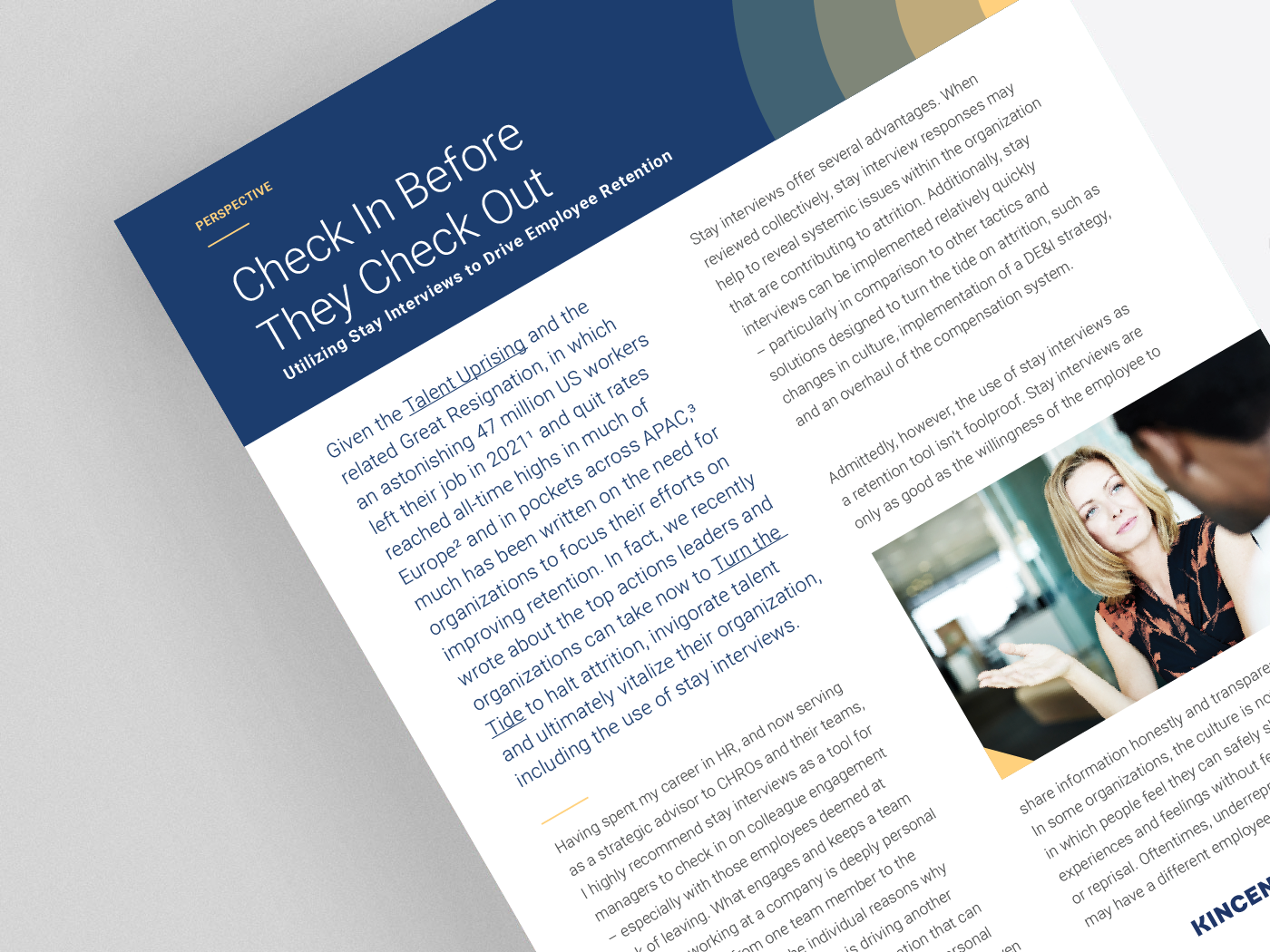
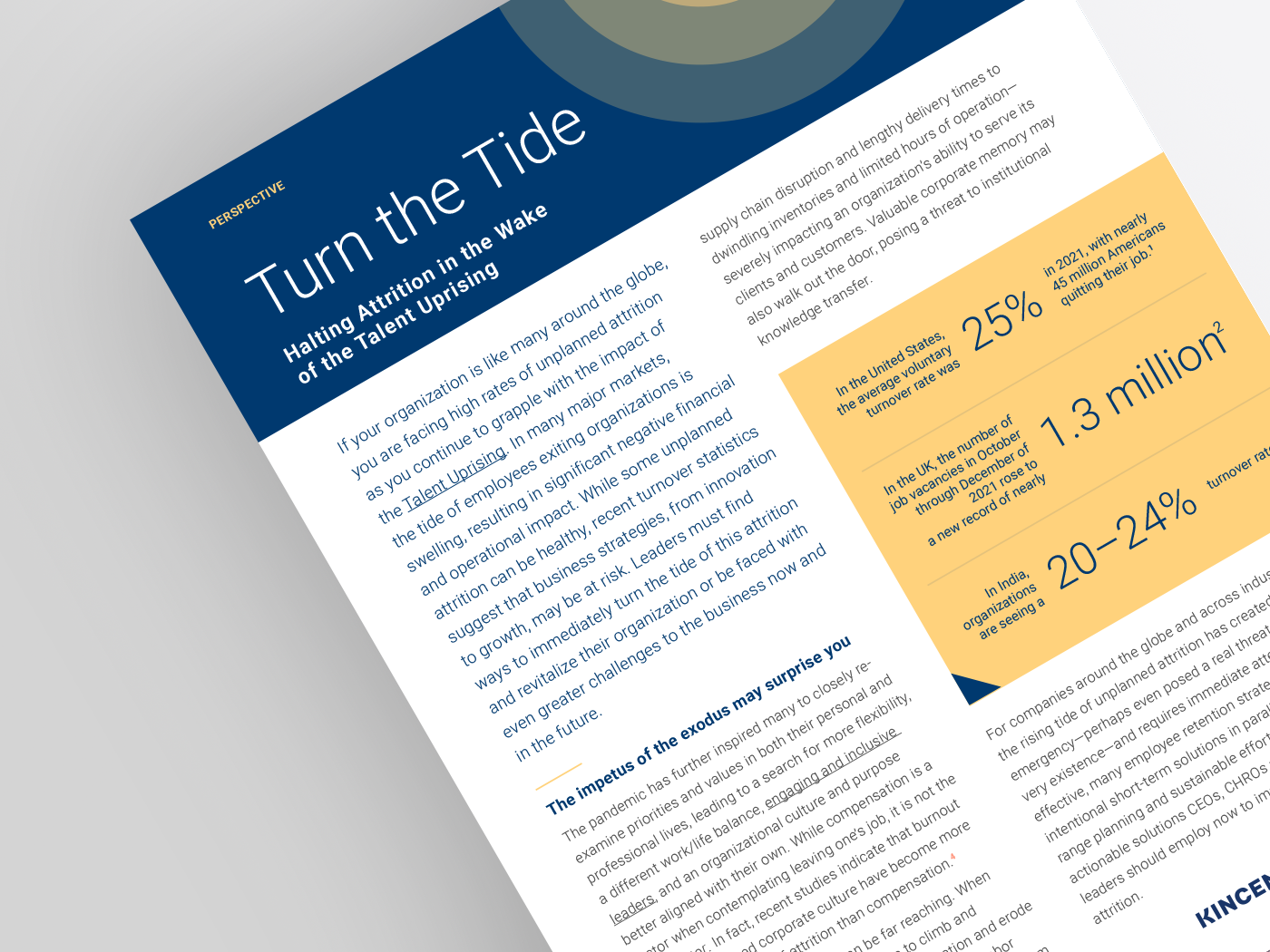
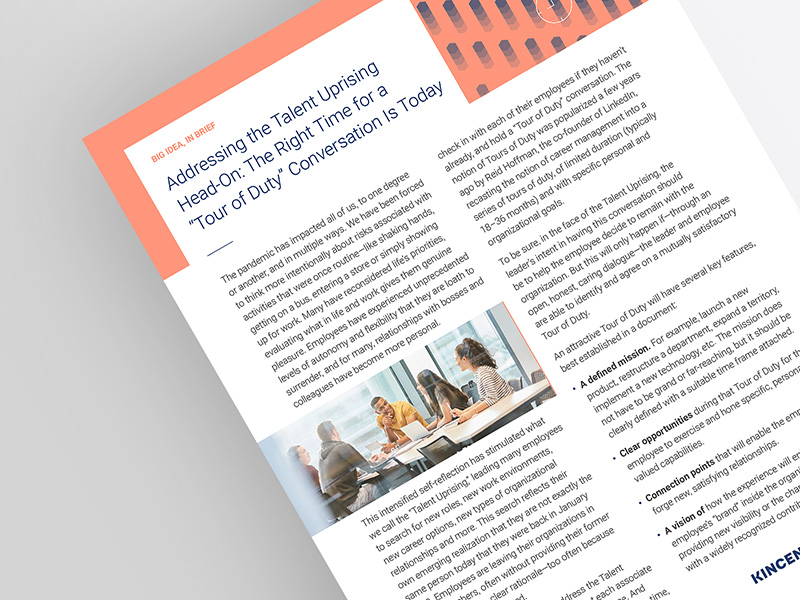
Want the latest insights delivered straight to your mailbox?